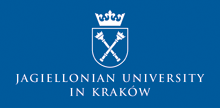Speaker
Description
The ab-initio theoretical study of the three-nucleon (3N) observables for the nucleon elastic and inelastic scattering on the deuteron is possible using realistic models of nuclear forces. Such models contain a number of free parameters whose values are typically fixed using the two-nucleon data. In case of few models, as the One-Pion-Exchange-Gaussian (OPE-Gaussian) force [1] or the chiral force with the semilocal momentum-space regularization [2] derived by Bochum group even beyond the fifth order of chiral expansion (N4LO), in addition to the central values of parameters also their correlation matrix has been determined. The knowledge of the correlation matrix of the potential parameters opens new possibilities in studies of few-nucleon systems. In this presentation I will give two examples of such studies:
Firstly, we have applied the OPE-Gaussian force and the chiral N4LO potential with the semilocal momentum space regularization to study the propagation of uncertainties of two-nucleon interaction parameters to 3N scattering observables [3, 4] and have determined corresponding statistical uncertainty of these observables for the first time.
Secondly, we have investigated correlations between various two- and three-nucleon observables as well as between observables and specific potential parameters. While the complex structure of 3N scattering equations makes analytical studies of such correlations extremely difficult, the statistical approach can be here successfully applied. Knowledge of correlations between observables increases our understanding of 3N Hamiltonian. That piece of information is also necessary for a correct and precise performing the fitting procedure for many-body interactions. Our study indicates which of the 3N observables are particularly useful in this context.
-
R. Navarro Pérez, J. E. Amaro, and E. Ruiz Arriola, Phys. Rev. C89, 064006 (2014).
-
P. Reinert, H. Krebs, and E. Epelbaum, Eur. Phys. J. A54, 86 (2018).
-
R. Skibiński et al., Phys. Rev. C98, 014001 (2018).
-
Yu. Volkotrub et al., Acta Phys. Polon. B50, 367 (2019).

